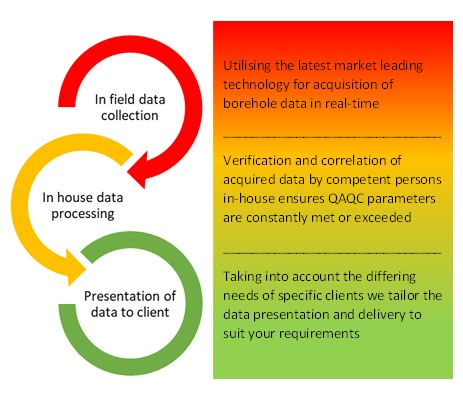
Drilling is by far the most expensive, labour-intensive and time-consuming component of any geological exploration programme.
Geophysical logging and sampling the rocks and fluids encountered, are the only practical methods that can derive information about the rock formations that boreholes encounter.
Borehole logging can:
- Save time and money in gathering data;
- Provide a continuous and objective record of the intersected rocks.
Downhole geophysical logging is the science of measuring and analysing the various physical and electrical properties of the wallrocks encountered in the borehole.
This is done by the lowering geophysical instruments into the borehole and recording various data as the tool is drawn back up to the surface.
The acquired data are then used to produce a borehole log – an electronic record against depth of the various properties encountered.
The diagram below shows the interaction of the components that make up a typical logging operation from the downhole data acquisition to the final supply of processed to the client.

